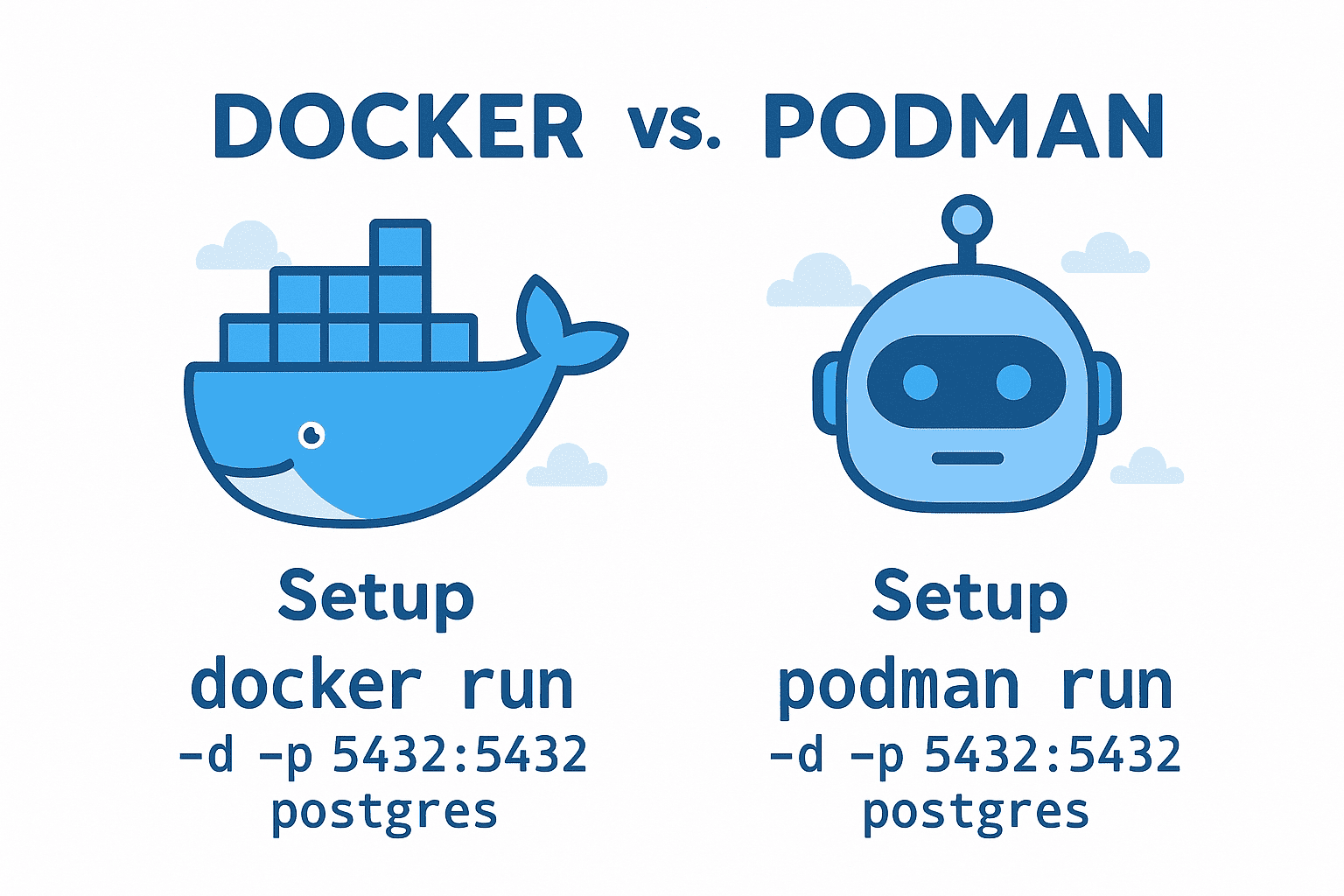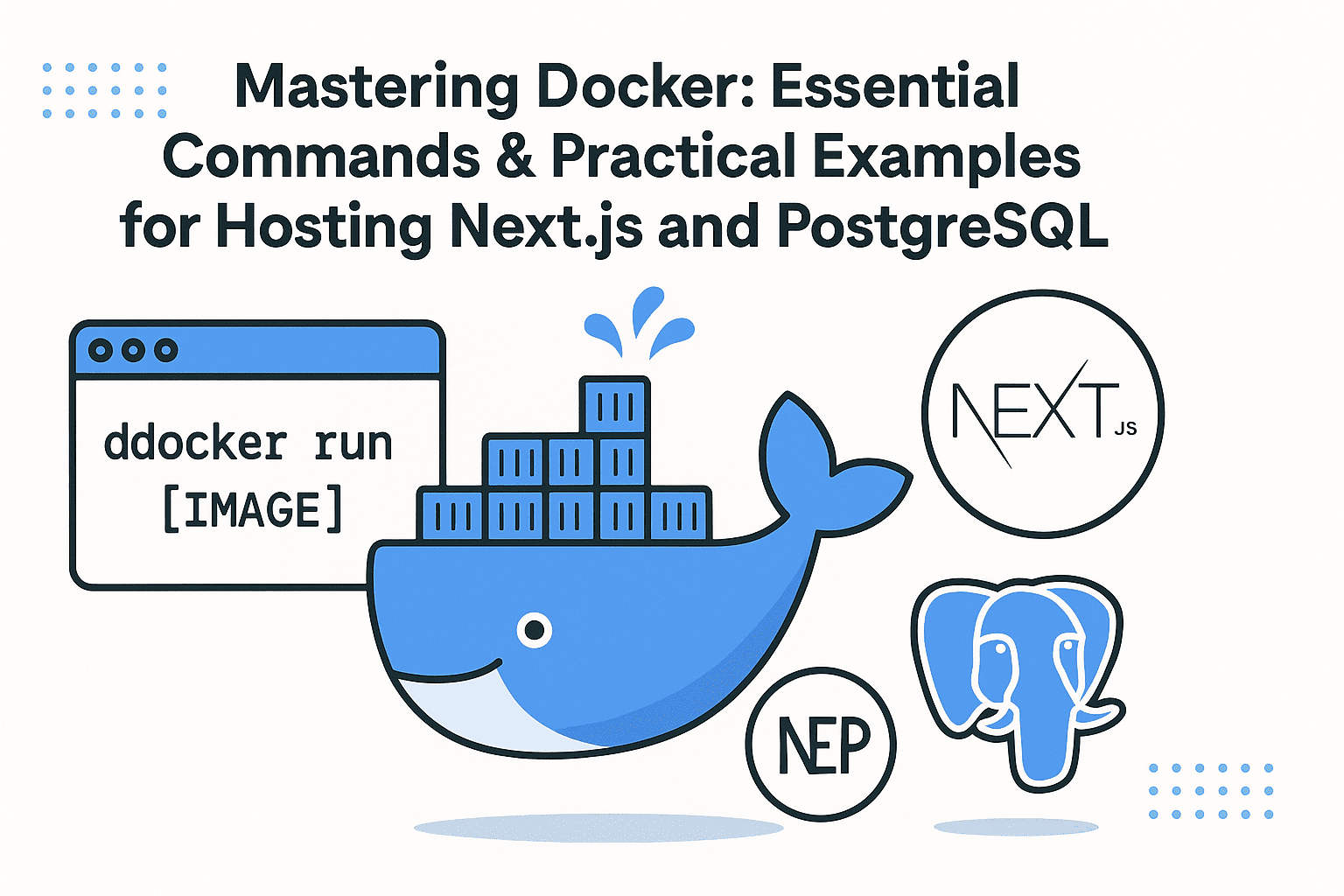Containerization has become a cornerstone of modern software development, enabling developers to package applications with their dependencies into portable units. Two popular tools in this space are Docker and Podman. While both allow you to run containers, they differ in design philosophy, features, and use cases. In this article, we’ll compare Docker and Podman, walk through their installation steps, and guide you through setting up a PostgreSQL database with both tools.
🧩 Docker vs. Podman: Key Differences
| Feature | Docker | Podman |
|---|---|---|
| Origin | Developed by Docker Inc. (2013) | Part of the Open Container Initiative (OCI), developed by Red Hat (2019) |
| Daemon Requirement | Requires a Docker daemon to manage containers | Daemonless (uses runc directly) |
| Security | Requires root privileges by default (though non-root support exists) | Native support for running containers as non-root users |
| Ecosystem | Larger ecosystem with extensive tools, orchestration (Kubernetes), etc. | Lightweight, container-native, with growing ecosystem |
| Use Case | Broad use in development, staging, and production environments | Ideal for lightweight workloads, CI/CD pipelines, and systems without daemons |
Docker is the original player in containerization, with a vast community and ecosystem. Podman, on the other hand, is designed to be a modern, daemonless alternative, often preferred for its simplicity and security-focused approach.
🛠️ Installation Steps: Docker vs. Podman
Install Docker on Linux (Ubuntu/Debian)
- Add Docker’s official repository:
sudo apt update sudo apt install docker.io - Start Docker service:
sudo systemctl start docker sudo systemctl enable docker - Verify installation:
docker --version sudo docker run hello-world
Install Podman on Linux (Ubuntu/Debian)
- Install Podman and its dependencies:
sudo apt update sudo apt install podman - Install the container engine (optional for systemd support):
sudo apt install systemd-container - Verify installation:
podman --version podman run hello-world
Note: Podman requires runc to be installed, which is included in most modern Linux distributions.
🐋 Setting Up PostgreSQL with Docker and Podman
Step 1: Create a PostgreSQL Container
Both tools use the same official PostgreSQL image (postgres), but their commands differ slightly.
With Docker:
- Run a PostgreSQL container:
docker run -d \ --name my-postgres \ -e POSTGRES_USER=myuser \ -e POSTGRES_PASSWORD=mypassword \ -p 5432:5432 \ postgres - Access the database:
Usepsqlfrom your terminal:docker exec -it my-postgres psql -U myuser
With Podman:
- Run a PostgreSQL container:
podman run -d \ --name my-postgres \ -e POSTGRES_USER=myuser \ -e POSTGRES_PASSWORD=mypassword \ -p 5432:5432 \ postgres - Access the database:
podman exec -it my-postgres psql -U myuser
Note: Podman may require additional configuration for persistent storage or networking. For advanced setups, use podman commit to save changes into a new image.
📊 Key Considerations for Choosing Between Docker and Podman
| Factor | Docker | Podman |
|---|---|---|
| Ease of Use | More mature, user-friendly for beginners | Slightly steeper learning curve due to daemonless design |
| Security | Less secure by default (requires root) | Native support for non-root containers, safer in production |
| Performance | Slightly overhead due to daemon | Lightweight, faster for simple workloads |
| Community & Ecosystem | Larger community and integration with Kubernetes, swarm, etc. | Growing ecosystem, ideal for Red Hat ecosystems (OpenShift) |
Use Docker if:
- You need advanced orchestration tools (e.g., Kubernetes, Docker Compose).
- Your workflow relies on a broad ecosystem of tools and services.
Use Podman if:
- You want a lightweight, daemonless container runtime.
- You prioritize security and non-root isolation for production environments.
🧠 When to Use Each Tool
| Scenario | Recommended Tool | Reason |
|---|---|---|
| Development & Testing | Docker | Rich ecosystem, easier debugging with docker logs |
| CI/CD Pipelines | Podman | Daemonless design avoids conflicts with existing services in build systems |
| Production Environments | Podman | Native non-root support, better isolation for security |
| Kubernetes Clusters | Docker (via containerd) | Kubernetes uses containerd as the default runtime, compatible with Podman’s philosophy |
🚀 Conclusion
Docker and Podman each have their strengths, and the choice depends on your specific use case. Docker remains a powerhouse for enterprise-scale applications, while Podman shines in lightweight, security-conscious environments.
For developers new to containerization, starting with Docker is a safe choice. However, if you value simplicity and security, Podman’s daemonless approach could save you time in the long run.
Try both tools today! Run a PostgreSQL database with Docker for quick prototyping and switch to Podman for production-ready deployments.
Next Steps: Explore advanced networking, volume mounting, or orchestration with both tools to build a robust containerized workflow! 🚀



